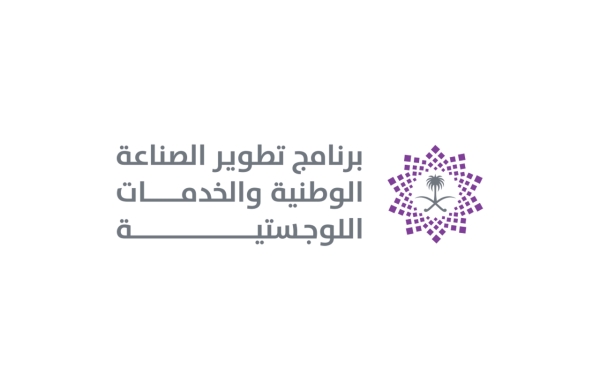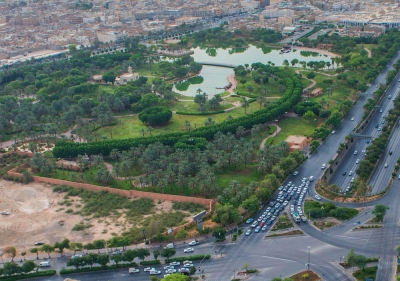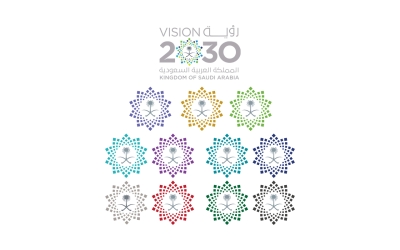
National Industrial Development and Logistics Program 'NIDLP'

The National Industrial Development and Logistics Program (NIDLP), is one of the programs to achieve Saudi Vision 2030. It was launched by His Royal Highness Prince Mohammed Bin Salman Bin Abdulaziz Al Saud, the crown prince, prime minister, and president of the Economic and Development Affairs Council, at the beginning of 2019 to emphasize the importance of its four sectors: energy, mining, industry, and logistics services, and their integration to create added value, diversify and maximize economic impact, and create an attractive investment environment. The program places an emphasis on the axes of local content and the Fourth Industrial Revolution, considering them key enablers and supportive factors of the main sectors covered in the program to achieve their targets and the desired impact.
The National Industrial Development and Logistics Program (NIDLP), aims to transform the Kingdom into a leading force and works on developing the infrastructure of its four sectors to serve as one of the key factors in enhancing the Kingdom's competitiveness and attractiveness as an ideal investment destination. This also involves optimal resource utilization and sector-specific policy and legislation improvements for the program to achieve its targets and to enable both local and foreign private sector investments.
The program also focuses on improving the trade balance, creating a local industry competitive in global markets, establishing a sustainable competitive advantage based on innovation, stimulating investments, creating job opportunities, advancing towards achieving the optimal energy mix, and enhancing the Kingdom's logistical connectivity locally and globally.
The strategic objectives of the program include: establishing special zones, rehabilitating economic cities, increasing the contribution of renewable energy sources to the energy mix, enhancing the energy sector's competitiveness, maximizing and leveraging the value achieved from the mining sector, developing industries related to oil and gas, localizing promising industries, localizing the military industry, increasing the local content percentage in non-oil sectors, establishing and improving the performance of logistics centers, enhancing local, regional, and international connectivity of trade and transport networks, increasing the production and distribution capacity of gas, raising the local content percentage in the oil and gas sector.
Achievements of the National Industrial Development and Logistics Program
Since its inception, the National Industrial Development and Logistics Program (NIDLP) has achieved a number of achievements, mainly:
- Revenues from the mining sector reached around SAR1 billion, marking the sector's all-time high, with the mining sector being a key contributor to economic diversification.
- Rapid gains in local content reached more than SAR18 billion by 2020, with over 23,000 government competitions since the initiation of the Government Tenders and Procurement Law.
- Launch of the Made in Saudi Program, which represents the official identity for promoting local products locally and globally.
- Launch of the general Geological Mapping Program to explore mining opportunities in the Kingdom, covering an area of over 600,000 km², encompassing the Arabian Shield geological region.
- Launch of five new shipping lines to enhance the strength of the Kingdom's port connectivity with global ports.
- Increasing the Kingdom's share of gas production, with the gas processing capacity reaching eighteen billion ft.
- Operating the first solar energy plant in Sakaka with a production capacity of three hundred MW and achieving a global record in the cost of electricity production from wind energy in Dawmat al-Jandal.
- Raising the capital of the Saudi Industrial Development Fund to SAR105 billion and amending its scope to be the main financial enabler for the program's four sectors.
- Financial empowerment and increased attraction of investments in the industrial field.
- Launch of the Saudi Export and Import Bank.
- Launch of the National Industrial Strategy.
Achievements of the National Industrial Development and Logistics Program in 2021
According to data from the General Authority for Statistics in 2021, the non-oil gross domestic product (GDP) of economic activities for the program sectors in 2021 grew by 9 percent compared to 2020, reaching SAR413.5 billion. The total non-oil exports in 2021 amounted to SAR313.5 billion. The performance of non-oil goods exports improved, increasing by 37 percent for 2020. Re-export operations also improved, amounting to SAR43.5 billion compared to SAR35.5 billion in 2020.
In 2021, the localization rate in the program sectors reached 32 percent, contributing to the reduction of the unemployment rate. The number of Saudi workers increased by about 31,100 workers due to the effectiveness of measures and initiatives. The Kingdom achieved the lowest electricity purchase cost in the world in al-Shuaibah Solar Energy Project at a rate of 10.4 cents/kWh, in addition to offering and approving the construction of renewable energy projects with a total capacity of 7,100 MW. The Saudi Power Procurement Company was separated from the Saudi Electricity Company, achieving revenues of about SAR727 million in the mining sector, issuing and renewing thirty-two reconnaissance licenses, 164 exploration licenses, and 579 building quarry licenses. Industrial investments of about SAR100 billion were realized, seventy-four companies were licensed within the military sector, 197 ready-built factories were established, 954 industrial licenses were issued, and production began in 820 new factories.
In 2021, achievements of the program also included the launch of the National Transport and Logistics Services Strategy, the introduction of the Unified Logistics License, and King Abdullah Port achieving the top rank globally in the Container Port Performance Index issued by the World Bank. Additionally, four Saudi airports ranked among the top one hundred international airports. Forty-five factories in industrial cities were assessed, and transformation plans for the Fourth Industrial Revolution were provided.
Achievements of the National Industrial Development and Logistics Program in 2022
The real GDP achieved a growth rate of 8.7 percent in 2022, which is the highest growth rate in the Saudi economy since 2011 according to data from the General Authority for Statistics, with a value of SAR2.975 trillion. The GDP exceeded USD1 trillion for the first time, marking the highest GDP growth among the G20 countries. The activities of the National Industrial Development and Logistics Program (NIDLP) contribute to 16 percent of the total GDP and 36 percent of the non-oil activity GDP. The total non-oil export growth rose by 38 percent from 2021 to SAR435 billion, with non-oil goods exports and re-exports totaling SAR315 billion. Service exports increased by 210 percent to reach SAR120 billion.
The number of workers in the sectors related to the program grew significantly to reach 1,655,000 workers, an increase of more than 266,000 workers in 2022. The ownership of the Saudi Power Procurement Company (Principle Buyer) was transferred to the state to enable the electricity sector to achieve the sector's strategic objectives. Five electricity production projects using renewable energy were launched, contributing to attracting investments of about SAR12 billion. Four agreements were signed for renewable energy procurement in al-Rass, Saad, Layla, and al-Shuaibah II, with a total capacity of 3.2 MW, attracting investments of about SAR9 billion.
One of the program's achievements in the mining sector was that the total revenues reached SAR1.45 billion, an increase of 95 percent from 2021. Five new mining opportunities were launched for the private sector in Bir Amk, Jabal Idsas, Umm Hadid, Jabal al-Sahaybah, and al-Radiniyah. The works of the Geological Mapping Program for the Arabian Shield region were 25 percent complete, with the total number of mining licenses amounting to 2,272 licenses. Two exploration licenses were issued; the first was for the Khunayqiyah Mining Site in al-Quway'iyah Governorate in Riyadh Province for SAR255 million. This site is one of the largest exploration sites in the Kingdom, covering an area of more than 350 km², with mining resources estimated at about twenty-five million t. The second license was for the Umm al-Damar Mining Site.
On October 18, 2022, His Royal Highness Prince Mohammed Bin Salman Bin Abdulaziz, crown prince and prime minister, launched the National Industrial Strategy to create an industrial economy that attracts investments. The Kingdom is focusing on 118 sets of industrial goods across twelve sectors, striving to compete at both regional and global levels through 136 initiatives. The Saudi economic development sector approved loans worth SAR14 billion in the sectors of industrial, energy, and mining. Ceer Company was launched to attract foreign investments estimated at SAR30 billion, contributing to adding thirty thousand new job opportunities by 2034.
In 2022, the Kingdom advanced seventeen global positions in the Logistics Performance Index issued by the World Bank, ranking thirty-eighth out of 160 countries. The first special logistics zone at King Khalid International Airport was inaugurated. A railway line connecting the north to the east was also inaugurated, along with six logistics zones within ports worth SAR2 billion. King Khalid Airport achieved the top position among the best regional airports in the Middle East, according to the Skytrax ranking.
The Royal Commission for Jubail and Yanbu attracted industrial investments worth SAR30.6 billion. Additionally, it has attracted investments of SAR10 billion for the Saudi Authority for Industrial Cities and Technology Zones, investments of SAR2.7 billion for the General Authority for Military Industries, investments of SAR1.6 billion for the development of shipping villages, and SAR2 billion for the establishment of service areas.
The program's achievements in the infrastructure field include the inauguration of Gate 9 at Jeddah Islamic Port by the General Ports Authority, which can now accommodate over eight thousand trucks. A ship refueling station in Rabigh Port was made operational, covering an area of twenty thousand m². The Saudi Authority for Industrial Cities and Technology Zones launched the National Productivity Program and adopted Fourth Industrial Revolution technologies in one hundred factories. The number of ready-built factories reached 818 factories.
The National Industrial Development and Logistics Program (NIDLP) also launched the Thousand Miles initiative to encourage entrepreneurship by providing support to enable entrepreneurs. Over 1,400 entrepreneurs applied for the program, in its first version, and over two hundred of them were trained. Additionally, the Dalil Platform initiative was launched to enhance communication with the private sector.
The main aspirations of the National Industrial Development and Logistics Program in 2030
The National Industrial Development and Logistics Program (NIDLP) aims for the Kingdom to achieve global leadership in the renewable energy sector, raise the local content rate in the oil and gas sector to 75 percent, maximize the contribution to the GDP to reach SAR176 billion, create more than 219,000 new jobs, localize 40 percent of the pharmaceutical industry market value, achieve 50 percent localization in military expenditure, localize 70 percent of the supply chain for basic and intermediate chemicals, reach 330 million passengers via the Kingdom's airports, and place the Kingdom among the top ten countries in the logistics performance index.
Related quizzes

